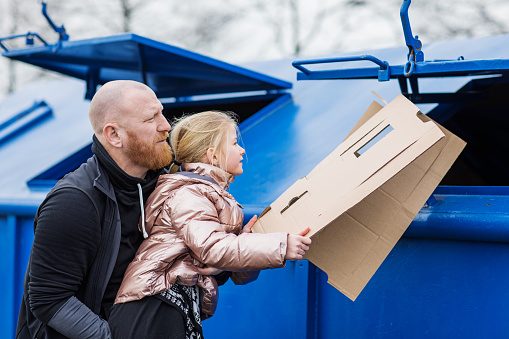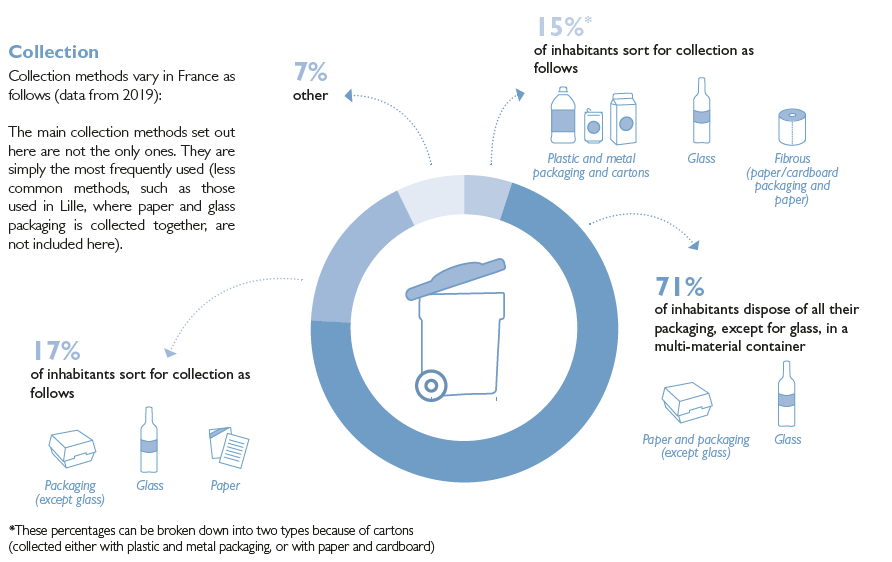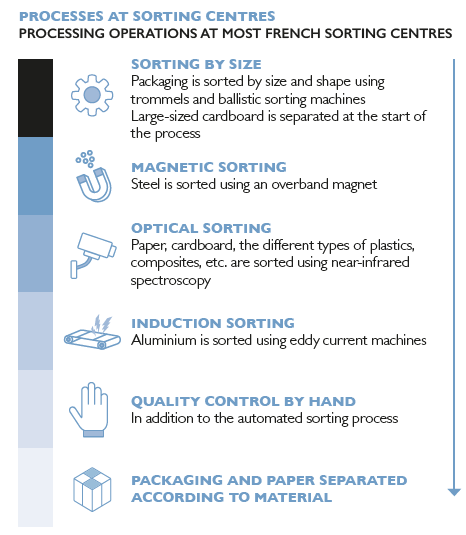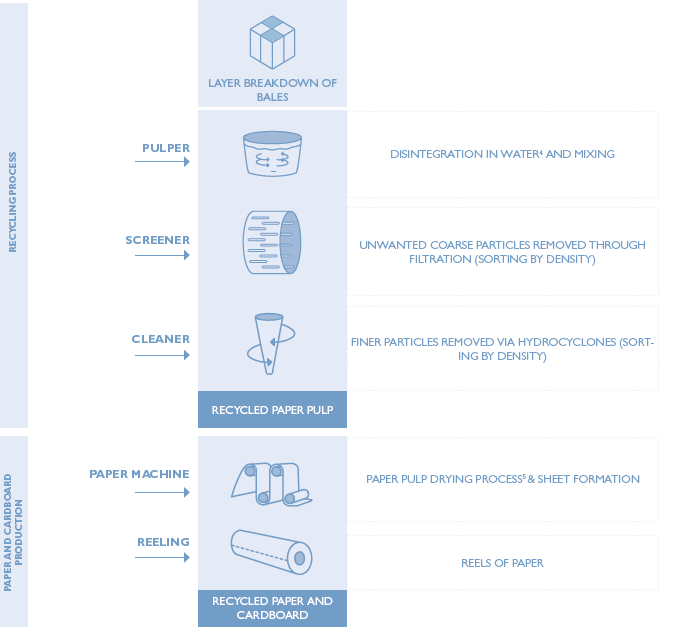SORTING AND RECYCLING
Collection, sorting and recycling are all part and parcel of recyclability. Let’s look at these stages more closely! CEREC is not taking into account the sorting step
1. Sorting practices
Sorting packaging is the first key stage of the recycling process, and everyone can contribute to its success.
In 2020, 52 kg of packaging waste was collected per inhabitant (source: Citeo’s 2022 Annual Report) and over 50% of people living in France were able to sort their packaging thanks to the 60 sorting centres updated as part of the Extension of Sorting Instructions (ESI).

2. Collection
Collection methods vary in France as follows (data from 2019):
The collection methods set out here are not the only ones. They are simply the most frequently used (less common methods, such as those used in Lille, where paper and glass packaging are collected together, are not included here).

3. Sorting
A key stage for transforming packaging waste tonnage into materials that can be recovered!

Paper and cardboard packaging are sorted into categories :
Non-laminated paper and cardboard from separate waste collection and/or collection at waste centres (Category 1 (1 or 2 streams: 5.02A and 1.05A / 5.02* and 1.05*)):
– Household packaging waste composed of non-laminated paper and cardboard compressed into bales, with a maximum moisture content of 12%, and sorted into two streams, where applicable, the first containing a minimum non-laminated paper/cardboard packaging content of 95%, and the second containing a minimum corrugated cardboard content of 95%;
Laminated paper and cardboard from separate waste collection (Category 2 (5.03A) / 5.03*)) (paper or cardboard made using layers of different materials which are combined using a binder):
– Household packaging waste composed of laminated paper and cardboard, compressed into bales, with a minimum laminated paper/cardboard household packaging content of 95% and a maximum moisture content of 12%.
In contrast with the 5.03 grade, the laminated paper or cardboard category (5.03A) is not limited to food and beverage cartons.
*in reference to standard EN 643.
To find out more, visit a sorting centre!
4. Recycling
The main grade-dependent outlets for the recycled material are:
For 5.02A paper and cardboard, the recycled material is made into:
- Paper for corrugated cardboard mostly
- Flat cardboard and cardboard spools, e.g. single or triple layer
- Moulded cellulose
- Flexible packaging paper
For 5.03A paper and cardboard, the fibres produced by the process end up on the following markets: hygiene products, paper for corrugated cardboard and flat cardboard.


